Este post também está disponível em:
Português
English
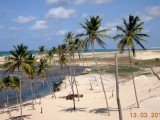
The small municipality of Rio do Fogo, on the Potiguar coast, has a deserted beach, beautiful coconut trees, warm water and lots of fun along the rivers and dunes.
The Praia do Rio do Fogo is located in the town of the same name, very close to Natal.
The fishing town already has about ten thousand inhabitants and maintains its popularity for being a place with a very peaceful lifestyle.
The attractions are lagoons, parrachos, preserved forest, cliffs, dunes and plenty of tranquility.
Local tourism is represented by the beauty of the beaches of Rio do Fogo, Barra de Punaú, Pititinga and Zumbi.
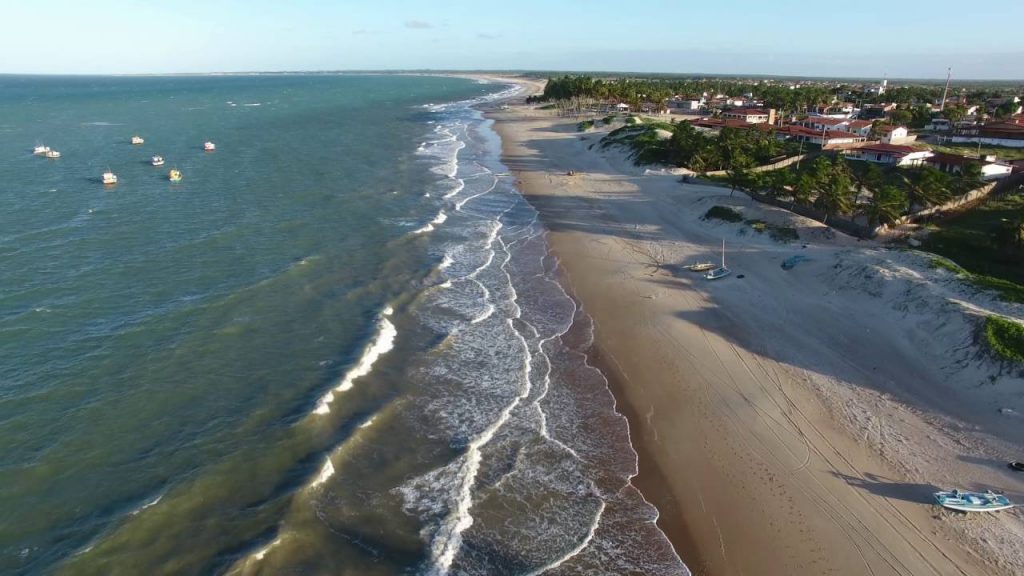
Ecotourism also has its attractions, such as: mangrove reserves, parts of the Atlantic Forest, parrachos, lagoons, dunes and Morro do Urubu. One of the most beautiful sceneries is Barra de Punaú.
The bar is the meeting point of the river with the sea. We suggest the tourist to enjoy the beautiful sunset of this region.
The name of the city Rio do Fogo, according to what the locals say, was given by fishermen who, at sunset, saw a ball of fire over the river.
Video about Rio do Fogo in RN
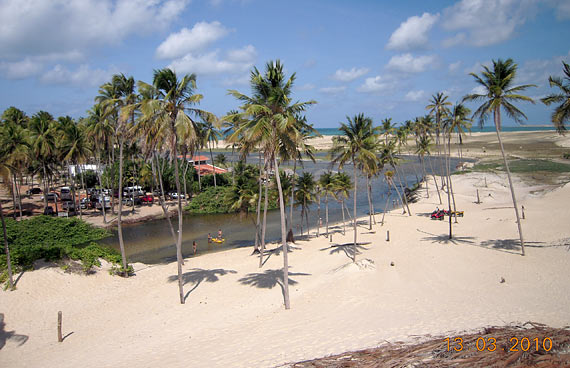

Rio do Fogo no RN - Reportagem

Rio do Fogo no RN - Guia de Turismo27:51

Rio Punaú e Parrachos de Rio do Fogo09:31
Tourist spots of Rio do Fogo in RN
Barra de Punaú
One of the most beautiful sceneries is Barra de Punaú, meeting point of the river with the sea and perfect to enjoy the sunset.
The dark waters of the creek divide the beach of Zumbi – wild and colorful because of the fishing boats – and the beach of Pititinga.
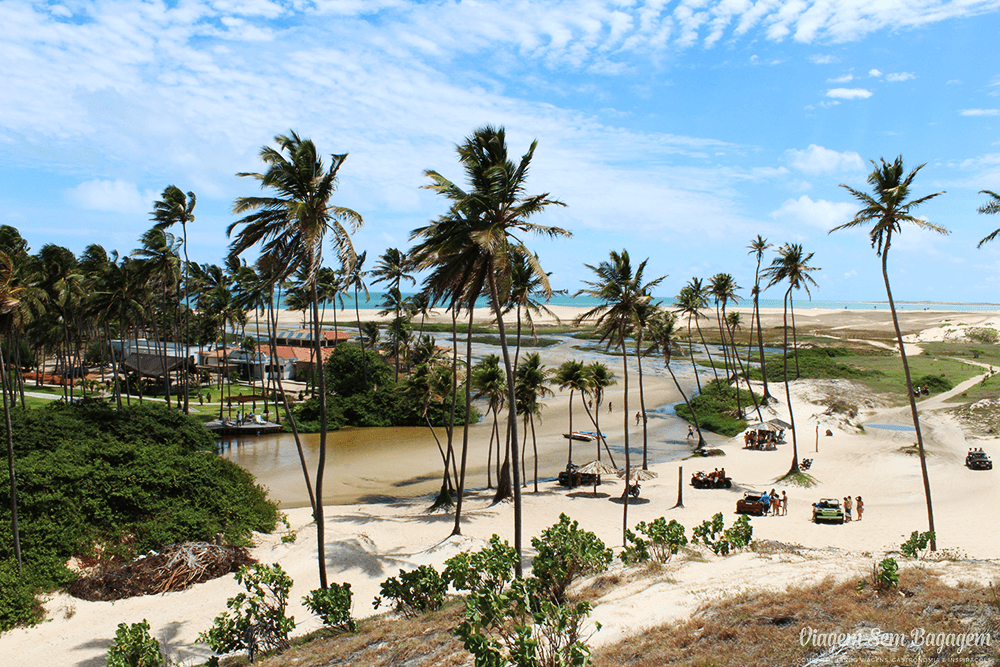
Protected and with natural pools, both are sought after for diving, sailing and canoeing. On the beach that gives the city its name, the highlight is the Fogo lagoon.
The complete tour of the region should include walks to the fishing villages. In the villages, one can observe the richness of local handicrafts, with delicate pieces in labyrinth lace.
The tour starts in Punaú, one of the districts belonging to Rio do Fogo.
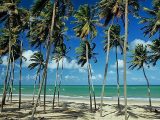
The buggy ride makes the first stop is at the top of the dune from where you can see the giant wind turbines of the wind farms. On the other side are the beaches.
The dunes are mobile and change position according to the wind.
Lagoa da Mutuca
Ahead, another stop to cool off: Lagoa da Mutuca in Rio do Fogo – a reference to a very small mosquito.
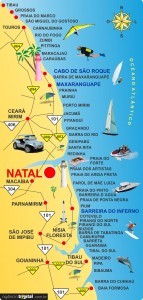
The lagoon is in a private area. Therefore, only people who are authorized can enter. The lagoon, larger than an official soccer field, is supplied by rainwater absorbed by the dunes.
Zumbi Beach
Two kilometers later you have Zumbi Beach, with open sea, without reefs. A calm beach, which you can bathe without problems. The waves are below one meter.
Zumbi beach has a still wild beauty as a result of being an almost unknown beach.
It is a typical fishing village, but also serves as a nook for some vacationers. Its landscape is composed of coconut trees, low dunes and the sea is calm. If you want to know this beach is only 70km from Natal RN.
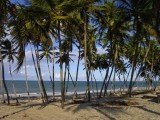
Rio do Fogo Beach
In Rio do Fogo the sea is like “piscinão”, without wave, the beach is little frequented and the water temperature is around 27ºC.
Another peculiarity of the fishing village is the shade created by huge coconut trees by the sea.
The rooms of the inns are 300 meters from the beach. One of them has a leisure structure set up for use during the day. The pool is natural.
At this time of year, the color of the water is striking – reddish because of the vegetation in the area. There is also another detail: “When the tide is full, the river is half and half.
Half salt water, half fresh water. So you have that sensitivity of feeling the water very warm below and cold above.
The kayak ride costs R$ 5, for half an hour. The stand up paddle, on the other hand, costs R$ 130, for two hours. The zip line with a drop in the river is cheap: R$ 5 per person and the quad bike ride along the beach – R$ 60, for half an hour for two people. Under the sun, in the shade of coconut trees or tents, in Rio do Fogo the wind does not stop.
Parrachos de Rio do Fogo or Parrachos de Perobas
It is in the municipality of Touros, located approximately 75 km north of Natal, that the Parrachos de Perobas are located.
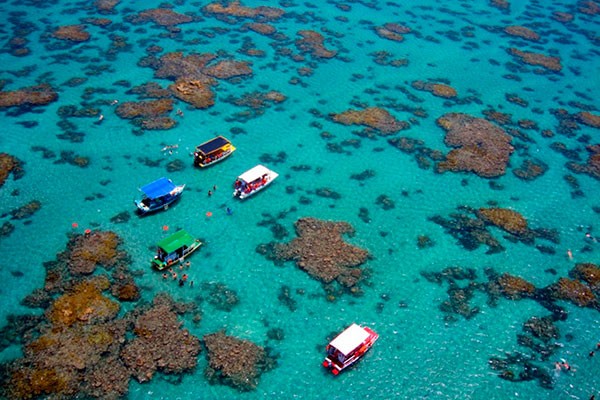
Also known as Parrachos de Rio do Fogo, they are a grouping of corals (coral reef) that, during low tide, form natural pools, whose diving can be done with snorkel or cylinder.
Shallow than the Parrachos de Maracajaú and with less marine life, they receive fewer tourists and have a much simpler structure.
There are no floating platforms (support point at sea), such as Maracajaú Diver, nor support base (on land) with various leisure options, such as Ma Noa Park.
However, the visit can be combined with a stop at the paradisiacal Barra de Punaú, where you can see dunes, deserted beaches, beautiful coconut groves and the meeting of the clear waters of the Punaú River with the sea.
How to get there
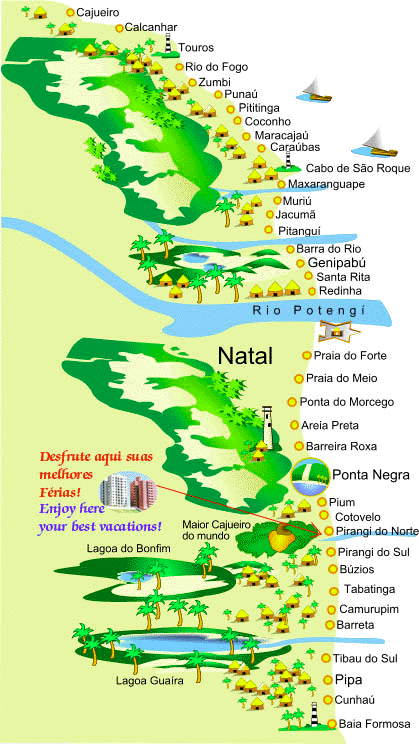
Rio do Fogo RN is neighboring the municipalities of Touros, Maxaranguape and Pureza,Rio do Fogo is situated 13 km south-east of Touros, the largest city in the surroundings.
Tourism and Travel Guide of Rio do Fogo RN and Northeast Brazil



















